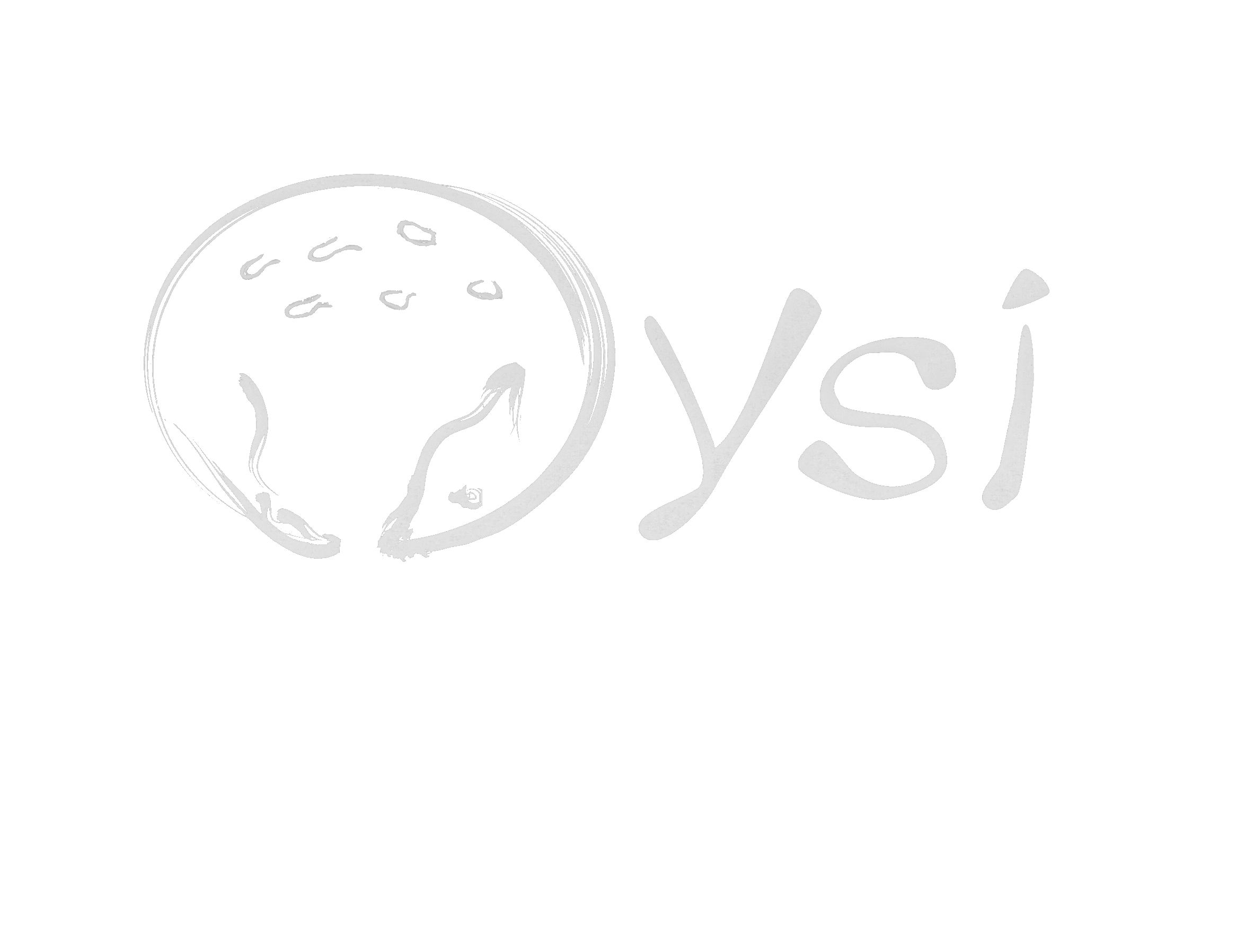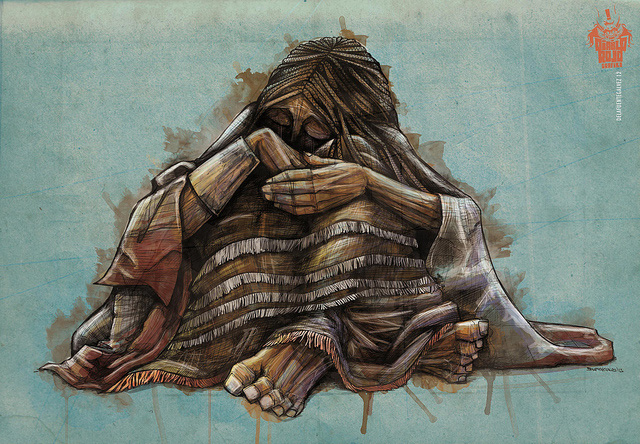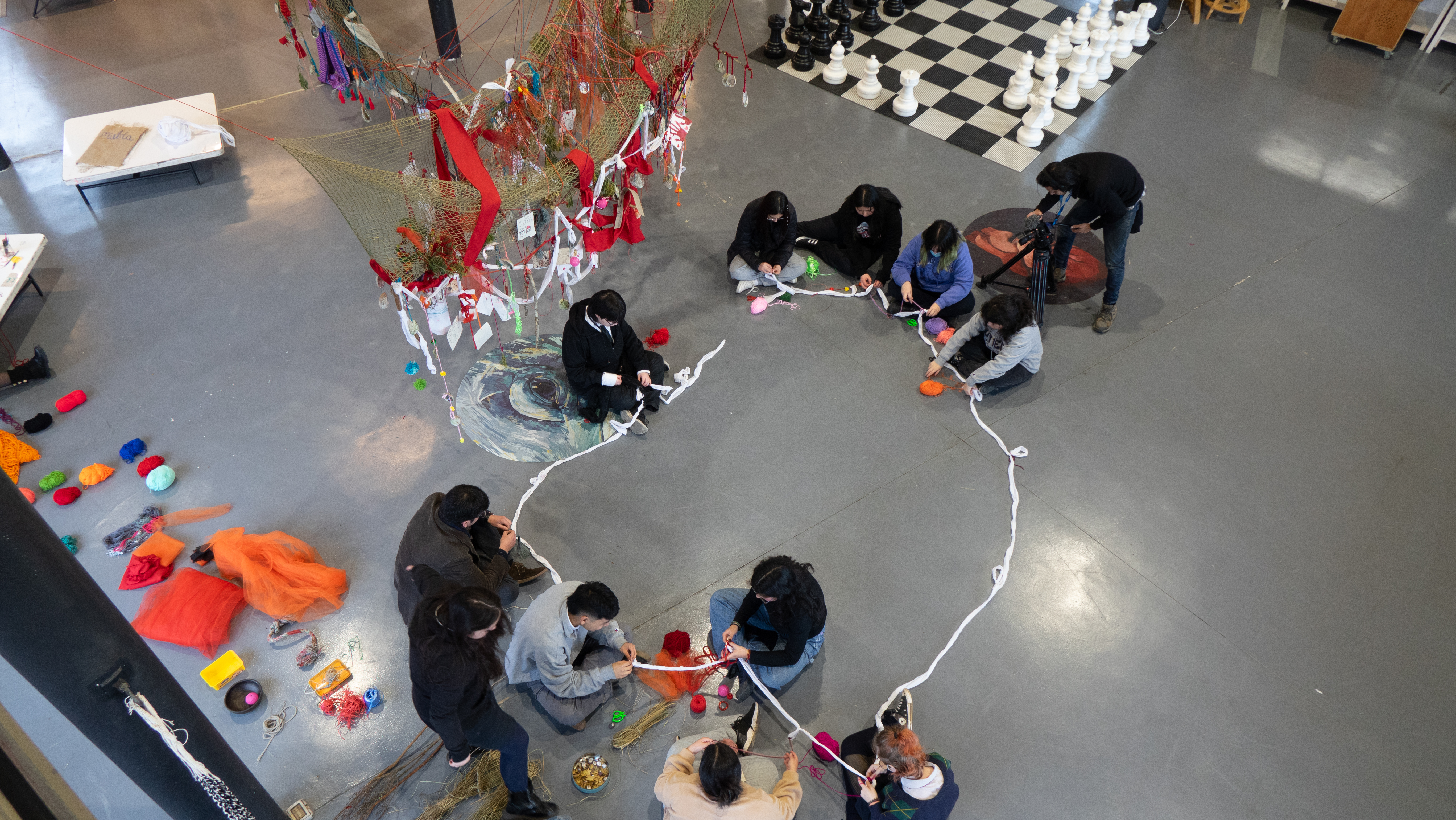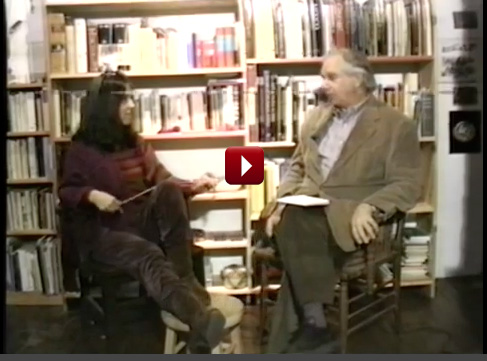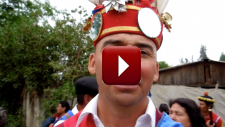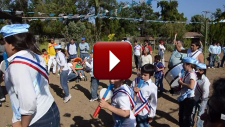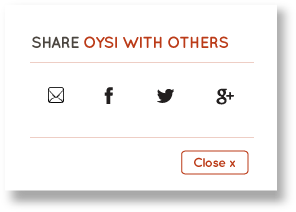Oysi creates, installs and implements educational programs in cooperation with indigenous communities.
Each project involves an initial workshop to launch the system and establish procedures for sustainability. The purpose is to create an ongoing relationship between elders, children and teachers through personal exchanges during and after the workshop. The role of the artists and teachers is to empower the children and their communities and to provide the technical skills and tools required for this process. A critical aspect is the teaching of art to awaken their connection to their environment and stories. The workshops establish methods for communities to tell and document their own stories in a dynamic and ongoing manner with a continuing flow of text, audio and visual materials with full access to the wider world of the internet community. Teachers and artists will support these efforts in a frequency and manner to be tailored to the needs of each community.
The Caleu Project began in l995, this was the first Oysi School Project. Cecilia Vicuña was invited to conduct a workshop at the Capilla de Caleu schoo in Chilel. It was sponsored by The Touchstone Center for Children of New York, and the MECE Rural of the Ministerio de Educación de Chile. The aim of the project was to reconnect the community of Caleu to its ancient oral poetic traditions, the Bailes Chinos of the Aconcagua culture of pre-Columbian Chile.
Caleu, a small town in the mountains of central Chile, sits atop the Cordillera de la Costa 70 kilometers northeast of Santiago, the capital of Chile. “Caleu” means “to be transformed” in the Mapuche language. The name indicates its pre-Columbian roots and its ceremonial importance as an ancient ritual site. Settled by the Spanish early in the sixteenth century, the people of Caleu adopted Christianity and the former rituals took the name of “bailes chinos” (chino dances), which began to be performed within the Christian calendar. The bailes chinos of Caleu reached their peak in the early twentieth century when Caleu hosted festivals involving competing troups of chino dancers from other communities. At that time, the Caleu dancers were led by the “alferez” Manuel Astorga, who died in l965. He was one of the best known “alfereces” or banner poets of his day. Today, the Chino dance of Caleu is struggling to stay alive, and Cecilia’s work in this community is dedicated to support its continuity.
The Quillota Project was intitiated in December 2010 as an outgrowth of Cecilia’s work with various Chino groups of Central Chile. In this workshop, the children remember the story of the Child of Aconcagua, probably a native of the Valley itself, who was sent first to Cusco, Peru to be prepared for his sacrifice at the summit of the Aconcagua mountain. The sacrifice was performed to ensure the fertility of the valley and the fluidity of the water to the valleys.Today, the Aconcagua river is dying and the child and his sacrifice has been forgotten. Quillota, in ancient times, was the most populated site of Chile. It was a cultural center, where people from many cultures gathered. Today, it is a modern industrial city and its archealogical sites are covered up to construct soccer stadiums. The workshop was conducted with the participation of Andrea Avendaño and Francisco Ríos Araya.
The Bailes Chinos of Chile are the inspiration for the Oysi School
We believe that many communiteis around the world are still conneted with their ancient indigenous roots, though the threads of connection are weakened even severed.
In 2014, UNESCO designated El Baille Chino as an Intangible Cultural Heritage of Humanity, a category that includes: oral traditions, performing arts, social practices, rituals, festive events, knowledge and practices concerning nature and the universe. The Bailes Chinos originated as a religious dance during the colonial period of the 16th century. The dances mix Andalucian musical and Catholic religIous elements but are centered around the Sonido Rajado, the unique dissonant music of the ancient Paracas culture of Peru.
Cecrea creative laboratories and creative experiences
A collaboration with Cecrea and Oysi school in conjunction with Cecilia Vicuña’s exhibition at the National Museum of Fine Arts in Santiago, "Soñar el agua. A retrospective of the future", the artist conducted workshops in several regions.
The focalization of the centers was carried out in Cecrea La Ligua, Vallenar, Valdivia, and Castro. Five artists and collectives participated: Brigada Textil, Inés Galecio, Fernanda Aguilera, Colectivo Tinta negra-Estampa, and Anto Taulis.
It was proposed to work in four Creation Centers on the project "Dreaming water. A retrospective of the future", by the national artist Cecilia Vicuña, being the main framework. The implementation of creative laboratories and creative experiences with children and young people, whose contents are inspired by the artistic processes of the artist Cecilia Vicuña and facilitated by a local artist.
